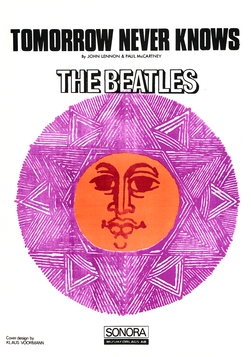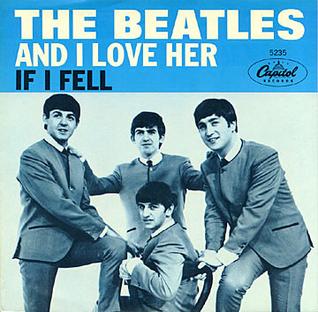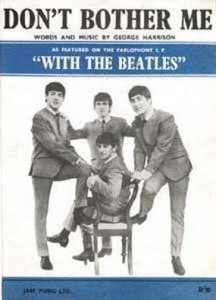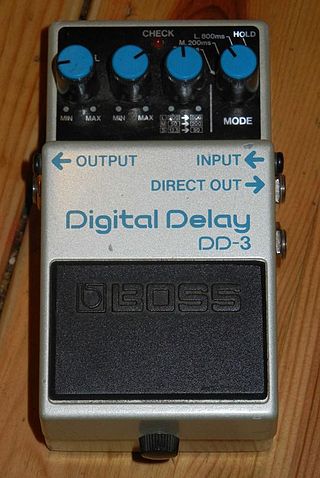
An effects unit, effects processor, or effects pedal is an electronic device that alters the sound of a musical instrument or other audio source through audio signal processing.

Abbey Road Studios is a music recording studio at 3 Abbey Road, St John's Wood, City of Westminster, Greater London, England. It was established in November 1931 by the Gramophone Company, a predecessor of British music company EMI, which owned it until Universal Music Group (UMG) took control of part of it in 2013. It is ultimately owned by UMG subsidiary Virgin Records Limited.

Multitrack recording (MTR), also known as multitracking, is a method of sound recording developed in 1955 that allows for the separate recording of multiple sound sources or of sound sources recorded at different times to create a cohesive whole. Multitracking became possible in the mid-1950s when the idea of simultaneously recording different audio channels to separate discrete tracks on the same reel-to-reel tape was developed. A track was simply a different channel recorded to its own discrete area on the tape whereby their relative sequence of recorded events would be preserved, and playback would be simultaneous or synchronized.
Flanging is an audio effect produced by mixing two identical signals together, one signal delayed by a small and (usually) gradually changing period, usually smaller than 20 milliseconds. This produces a swept comb filter effect: peaks and notches are produced in the resulting frequency spectrum, related to each other in a linear harmonic series. Varying the time delay causes these to sweep up and down the frequency spectrum. A flanger is an effects unit that creates this effect.

Monaural or monophonic sound reproduction is sound intended to be heard as if it were emanating from one position. This contrasts with stereophonic sound or stereo, which uses two separate audio channels to reproduce sound from two microphones on the right and left side, which is reproduced with two separate loudspeakers to give a sense of the direction of sound sources. In mono, only one loudspeaker is necessary, but, when played through multiple loudspeakers or headphones, identical signals are fed to each speaker, resulting in the perception of one-channel sound "imaging" in one sonic space between the speakers. Monaural recordings, like stereo ones, typically use multiple microphones fed into multiple channels on a recording console, but each channel is "panned" to the center. In the final stage, the various center-panned signal paths are usually mixed down to two identical tracks, which, because they are identical, are perceived upon playback as representing a single unified signal at a single place in the soundstage. In some cases, multitrack sources are mixed to a one-track tape, thus becoming one signal. In the mastering stage, particularly in the days of mono records, the one- or two-track mono master tape was then transferred to a one-track lathe used to produce a master disc intended to be used in the pressing of a monophonic record. Today, however, monaural recordings are usually mastered to be played on stereo and multi-track formats, yet retain their center-panned mono soundstage characteristics.
Overdubbing is a technique used in audio recording in which audio tracks that have been pre-recorded are then played back and monitored, while simultaneously recording new, doubled, or augmented tracks onto one or more available tracks of a digital audio workstation (DAW) or tape recorder. The overdub process can be repeated multiple times. This technique is often used with singers, as well as with instruments, or ensembles/orchestras. Overdubbing is typically done for the purpose of adding richness and complexity to the original recording. For example, if there are only one or two artists involved in the recording process, overdubbing can give the effect of sounding like many performers.
A phaser is an electronic sound processor used to filter a signal by creating a series of peaks and troughs in the frequency spectrum. The position of the peaks and troughs of the waveform being affected is typically modulated by an internal low-frequency oscillator so that they vary over time, creating a sweeping effect.

"Tomorrow Never Knows" is a song by the English rock band the Beatles, written primarily by John Lennon and credited to Lennon–McCartney. It was released in August 1966 as the final track on their album Revolver, although it was the first song recorded for the LP. The song marked a radical departure for the Beatles, as the band fully embraced the potential of the recording studio without consideration for reproducing the results in concert.

"And I Love Her" is a song recorded by English rock band the Beatles, written primarily by Paul McCartney and credited to the Lennon–McCartney partnership. It is the fifth track of their third UK album A Hard Day's Night and was released 20 July 1964, along with "If I Fell", as a single release by Capitol Records in the United States, reaching No. 12 on the Billboard Hot 100.

"Don't Bother Me" is a song by the English rock band the Beatles from their 1963 UK album With the Beatles. It was the first song written by George Harrison, the group's lead guitarist, to appear on one of their albums. A midtempo rock and roll song, it was originally released in the United States on the 1964 album Meet the Beatles!
Double tracking or doubling is an audio recording technique in which a performer sings or plays along with their own prerecorded performance, usually to produce a stronger or bigger sound than can be obtained with a single voice or instrument. It is a form of overdubbing; the distinction comes from the doubling of a part, as opposed to recording a different part to go with the first. The effect can be further enhanced by panning one of the performances hard left and the other hard right in the stereo field.
Duophonic sound was a trade name for a type of audio signal processing used by Capitol Records on certain releases and re-releases of mono recordings issued during the 1960s and 1970s. In this process monaural recordings were reprocessed into a type of artificial stereo. Generically, the sound is commonly known as fake stereo or mock stereo. Capitol Studios' staff engineer John Palladino created the process at the request of the record companies.

Delay is an audio signal processing technique that records an input signal to a storage medium and then plays it back after a period of time. When the delayed playback is mixed with the live audio, it creates an echo-like effect, whereby the original audio is heard followed by the delayed audio. The delayed signal may be played back multiple times, or fed back into the recording, to create the sound of a repeating, decaying echo.
Ken Townsend MBE, is an English sound engineer who played an important role at Abbey Road Studios. He worked on several Beatles albums, such as Rubber Soul, Revolver and Sgt. Pepper's Lonely Hearts Club Band. In 1966 he invented artificial double tracking (ADT). He spent his whole working career at EMI, and retired as the Chairman of the Studio Group after 42 years of service.

The studio practices of the Beatles evolved during the 1960s and, in some cases, influenced the way popular music was recorded. Some of the effects they employed were sampling, artificial double tracking (ADT) and the elaborate use of multitrack recording machines. They also used classical instruments on their recordings and guitar feedback. The group's attitude towards the recording process was summed up by Paul McCartney: "We would say, 'Try it. Just try it for us. If it sounds crappy, OK, we'll lose it. But it might just sound good.' We were always pushing ahead: Louder, further, longer, more, different."

Recording The Beatles: The Studio Equipment and Techniques Used To Create Their Classic Albums is a book by Kevin Ryan and Brian Kehew, published by Curvebender Publishing in September 2006. Written over the course of a decade, the book addresses the technical side of the Beatles' sessions and was written with the assistance of many of the group's former engineers and technicians, chief among them Peter K. Burkowitz, designer of the REDD mixing console.

Multitrack recording of sound is the process in which sound and other electro-acoustic signals are captured on a recording medium such as magnetic tape, which is divided into two or more audio tracks that run parallel with each other. Because they are carried on the same medium, the tracks stay in perfect synchronization, while allowing multiple sound sources to be recorded at different times.
The recordings made by the Beatles, a rock group from Liverpool, England, from their inception as the Quarrymen in 1957 to their break-up in 1970 and the reunion of their surviving members in the mid-1990s, have huge cultural and historical value. The studio session tapes are kept at Abbey Road Studios, formerly known as "EMI Recording Studios," where the Beatles recorded most of their music. While most have never been officially released, their outtakes and demos are seen by fans as collectables, and some of the recordings have appeared on countless bootlegs. The only outtakes and demos to be officially released were on The Beatles Anthology series and its tie-in singles and anniversary editions of their studio albums. Bits of some previously unreleased studio recordings were used in The Beatles: Rock Band video game as ambient noise and to give songs studio-sounding beginnings and endings. In 2013, Apple Records released the album The Beatles Bootleg Recordings 1963, which includes previously unreleased outtakes and demos from 1963, to stop the recordings from falling into the public domain.

In sound recording and reproduction, audio mixing is the process of optimizing and combining multitrack recordings into a final mono, stereo or surround sound product. In the process of combining the separate tracks, their relative levels are adjusted and balanced and various processes such as equalization and compression are commonly applied to individual tracks, groups of tracks, and the overall mix. In stereo and surround sound mixing, the placement of the tracks within the stereo field are adjusted and balanced. Audio mixing techniques and approaches vary widely and have a significant influence on the final product.
Send tape echo echo delay is a technique used in magnetic tape sound recording to apply a delay effect using tape loops and echo chambers.











